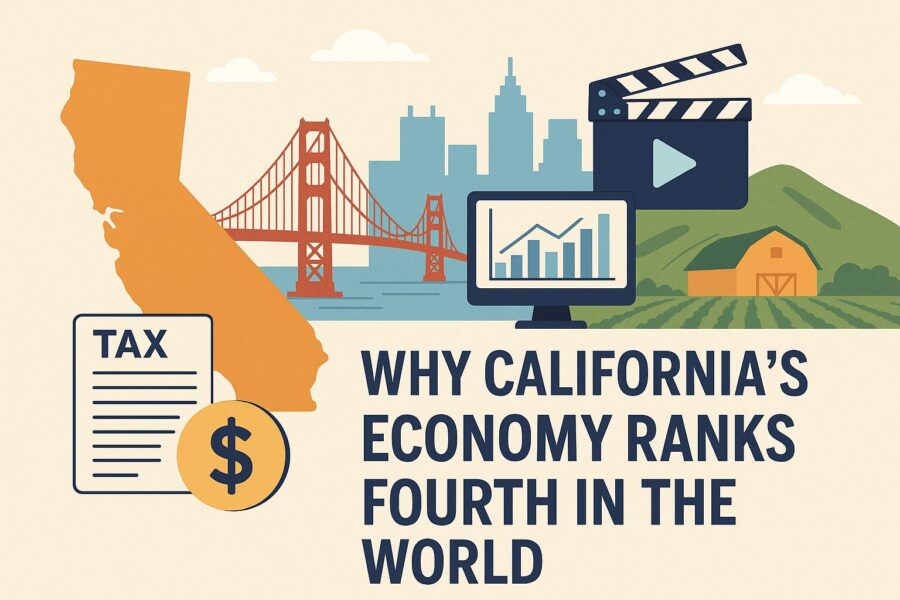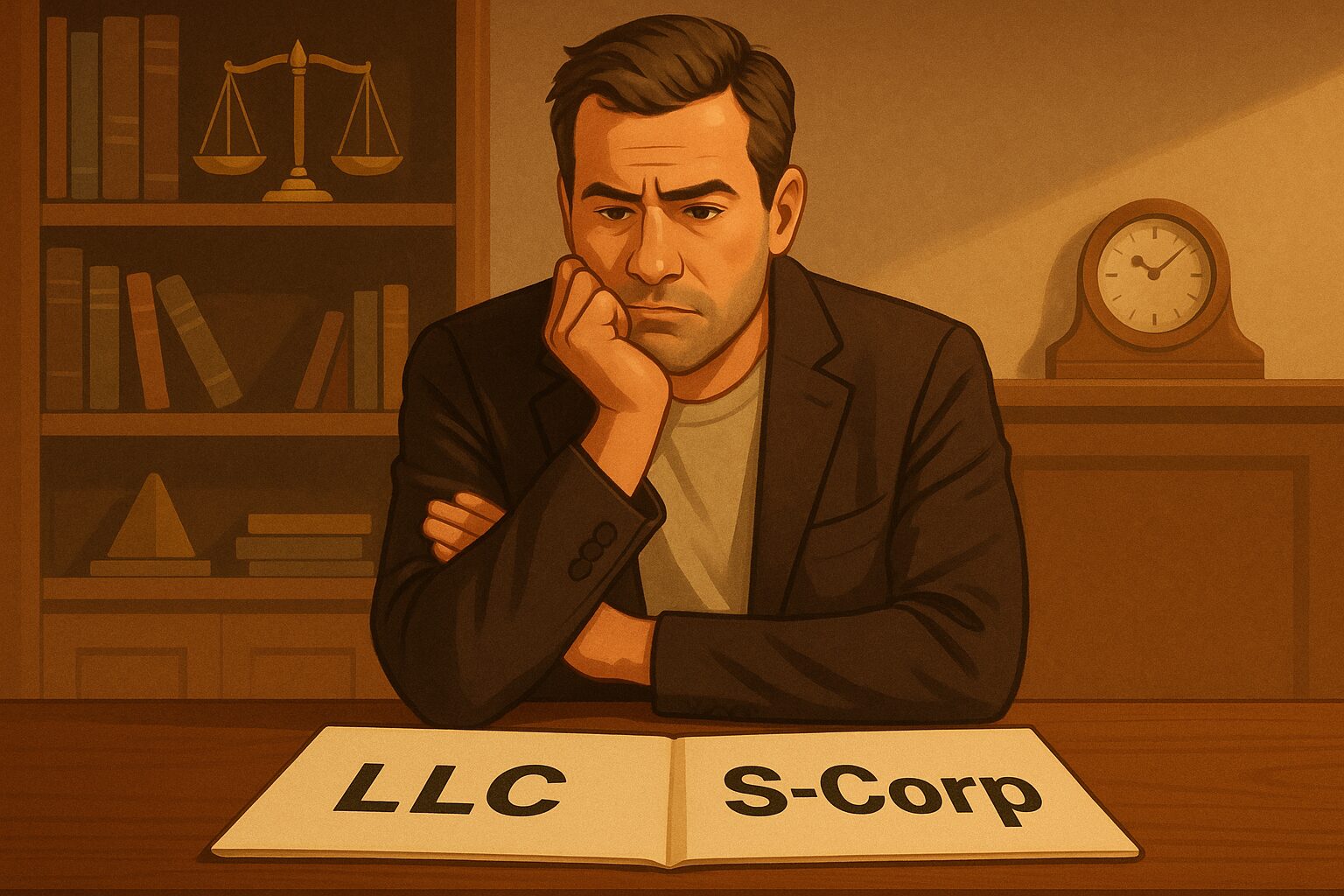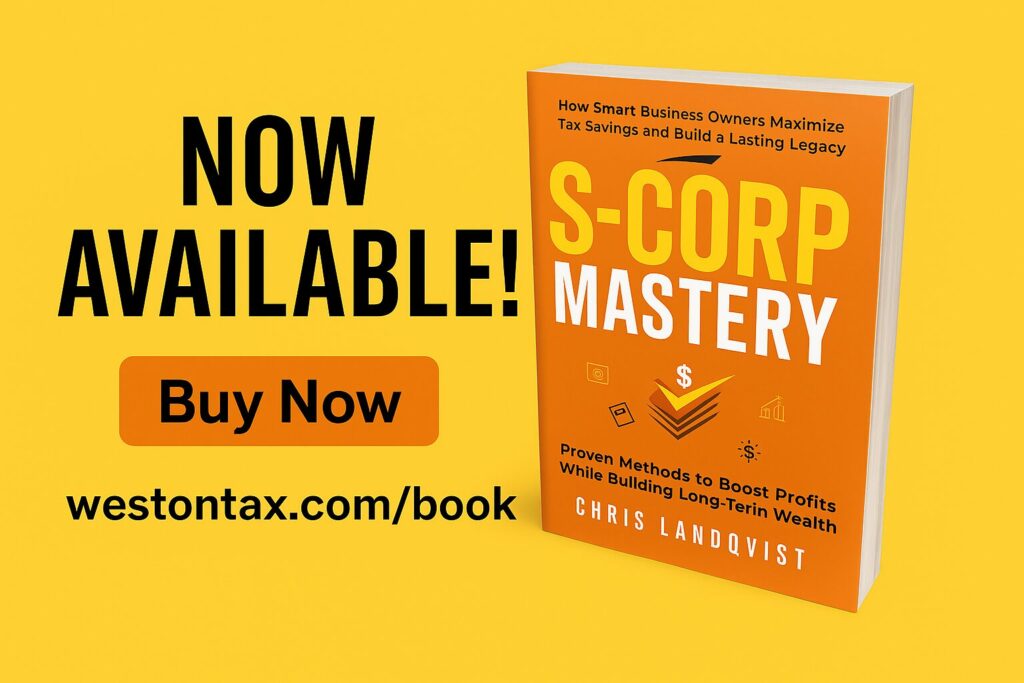California has surged past Japan to become the fourth-largest economy in the world. It boasts a $4.1 trillion GDP in 2024 according to the International Monetary Fund. On paper, this positions California alongside entire nations. Yet, what it means for you as a business owner is more complicated than a headline.
Running a company here offers immense opportunities — access to global markets, innovation hubs, and some of the world’s best talent — but it also means navigating one of the most complex, high-burden tax systems in the United States. The reality is that the same forces that make California a global powerhouse are also why so many entrepreneurs quietly relocate their LLCs and S-Corps to other states.
Governor Gavin Newsom’s office recently published an article about the subject. You can read it HERE.
Let’s break down what makes California both a land of opportunity and one of the toughest tax landscapes in America.
California’s Economic Engines: The Good
California is home to economic giants in entertainment, technology, and agriculture. Hollywood drives billions in global revenue each year while Silicon Valley continues to mint “tech-unicorns.” In addition, California produces over a third of the nation’s vegetables and two-thirds of its fruits and nuts. Biotech in San Diego, aerospace in Los Angeles, and renewable energy projects across the state add further depth.
These industries not only attract capital but also support thousands of small- and medium-sized businesses that thrive on contracts, services, and supply chains tied to these larger players. For entrepreneurs, that means opportunity is everywhere… if you can keep more of what you earn.
The California Tax Puzzle
The Golden State isn’t just known for innovation and sunshine — it’s infamous for its tax code. Here’s where things get complicated:
High Personal Income Tax
California levies one of the highest top marginal income tax rate in the nation — 13.3% — kicking in on income above $1 million. For small business owners structured as pass-through entities (like an LLC or S-Corp), this means your company’s profit flows directly onto your personal return, exposed to California’s progressive rates. Compare that with states like Texas or Florida, which have no personal income tax at all, and you start to see the disadvantage.
Corporate Taxation
California imposes an 8.84% corporate tax rate on C-Corporations, but even S-Corps aren’t off the hook. They face a 1.5% entity-level tax on net income, unique to California. This means that even if you elected S-Corp status to avoid “double taxation,” the state still takes a slice before profits pass through.
Franchise Tax
Every California LLC, regardless of size or profitability, owes a minimum $800 franchise tax each year. For new or struggling businesses, this creates a hurdle that simply doesn’t exist in states like Wyoming or Nevada. If your LLC earns more than $250,000, you’ll also pay an additional LLC fee based on gross receipts (not net income) which can sting if you operate in a low-margin industry.
Sales and Use Taxes
The statewide sales tax starts at 7.25%, the highest base rate in the country, and local add-ons can push the total above 10% in some jurisdictions. For businesses selling tangible goods, this adds compliance headaches across multiple municipalities with overlapping rules.
Payroll Taxes and Compliance
California employers also face steep payroll obligations. Between unemployment insurance, disability insurance, and paid family leave requirements, the state consistently ranks as one of the most expensive places to employ workers. Misclassifying employees as contractors here is a costly mistake—state agencies aggressively pursue violations under AB-5 rules.
A Simple Example: Same Business, Different State
Imagine a marketing agency that nets $500,000 a year.
If structured as an S-Corp in Florida, the owner might pay themselves a reasonable salary of $150,000, distribute the remaining $350,000, and owe only federal income tax. There is no state income tax, no franchise tax, no S-Corp entity tax on that distribution. Pretty neat, huh?
In California, the same agency faces:
- A 1.5% S-Corp tax ($7,500 on $500,000 net income)
- The $800 minimum franchise tax
- State personal income tax of up to 12.3% on distributions, depending on the owner’s bracket
- Higher payroll taxes on the $150,000 salary
When you add it all up, the California owner could pay tens of thousands more each year simply because of their zip code.
Hidden Complexity: Federal vs. State Alignment
California often refuses to conform to federal tax law changes. For example, when Congress allowed 100% bonus depreciation under the Tax Cuts and Jobs Act, California declined to follow suit, sticking with its own slower depreciation schedules. That means deductions you claim federally may not apply on your California return, creating a two-track system of recordkeeping and compliance.
The same goes for retirement plan deductions, R&D credits, and certain qualified business income (QBI) calculations. Without strategic planning, you may think you’re winning on the federal side while quietly losing in Sacramento.
The Current Climate: Economic Growth Meets Fiscal Strain
California’s GDP may rival entire countries, but its government is grappling with a budget shortfall approaching $20 billion. Rising healthcare costs, falling capital gains revenue, and emergency wildfire expenditures have drained reserves. Business owners feel these pressures indirectly, as lawmakers look for ways to plug holes — usually through tax increases, new fees, or aggressive enforcement.
Meanwhile, the homelessness crisis, housing shortages, and wildfire damages create further strain on the state budget and insurance markets. These realities increase the unpredictability of future tax policy.
Strategic Planning: Turning Complexity into Advantage
Here’s the silver lining: complexity creates opportunity — for those who plan. A seasoned tax strategist can help you:
- Structure your entity (LLC vs. S-Corp vs. C-Corp) to minimize overlapping state and federal liabilities.
- Shift income and expenses across jurisdictions to reduce exposure.
- Tap into overlooked California incentives (such as R&D credits, film and production credits, and renewable energy deductions) that can offset high baseline taxes.
- Navigate insurance payouts, casualty loss deductions, and net operating loss carryforwards after natural disasters.
- Prepare for changes in conformity when federal law shifts, so you’re not caught by surprise on your California return.
This isn’t just about compliance. It’s about creating a strategy that allows you to thrive in the world’s fourth-largest economy without getting crushed by its tax machinery.
Bringing It All Together
California is a state of extremes. It stands as an economic powerhouse with global reach, a cultural trendsetter that shapes the world, a place where dreams are both realized and shattered, and a leader in cutting-edge technology and innovation. On the other, it’s a state grappling with homelessness, wildfires, and fiscal strain — burdens that show up in its tax code and enforcement practices.
For business owners, this environment is both an opportunity and a minefield. With intelligent planning and the right tax strategist, you can capture the benefits of California’s vast marketplace while protecting yourself from its most punishing tax traps.
Your business deserves more than generic advice. It deserves a tailored strategy built for California’s unique challenges.
Welcome to the New Age of Accounting. Let’s begin.
P.S. If you found this article helpful, you’ll love my new book S-Corp Mastery: How Smart Business Owners Maximize Tax Savings & Build a Lasting Legacy. It’s now live and available in a sleek, easy-to-read PDF version. Grab your copy here

Chris is the Managing Partner at Weston Tax Associates, a best-selling author, and a renowned tax strategist. With over 20 years of expertise in tax and corporate finance, he simplifies complex tax concepts into actionable strategies that drive business growth. Originally from Sweden, he now lives in Florida with his wife and two sons.










